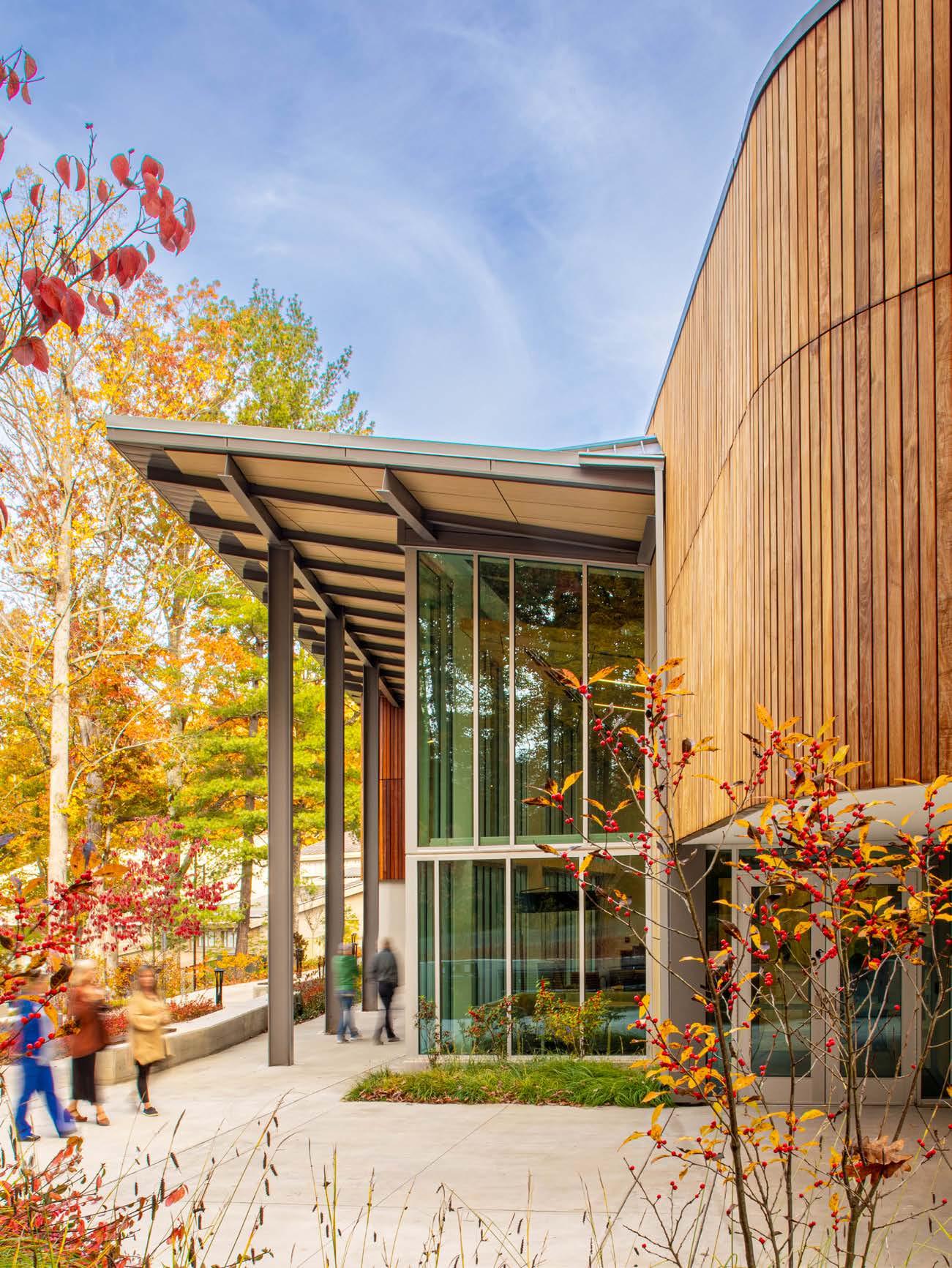
APRIL 2023 - APRIL 2024 ANNUAL REPORT
SUSTAINABILITY
BEYOND
Haywood Community College: Health and Human Services Building Clyde, NC

Welcome to our annual Beyond Sustainability Report. Little continues to be fully committed to transparency on our ongoing journey toward a regenerative future. As we celebrate our 60th year as a firm, we invite you to explore the continuing evolution of our sustainability efforts. We hope this report inspires you as we firmly believe regeneration is a collaborative effort.
At Little, our work is driven by our core values: CARE, STRETCH, and SPARK. These values shape our approach to everything we do together.
CARE reflects our deep commitment to understanding and addressing the unique needs and aspirations of our clients, communities, and the environment. STRETCH fuels our dedication to innovation and exploring frontiers. And SPARK embodies our passion for creative and transformative design.
These values are the bedrock of our organization, fostering collaboration and driving regenerative impacts in the built environment.

Veterans Affairs Outpatient Center Fredricksburg, VA

Truliant Operations Center Winston Salem, NC

DESIGNING FOR HARMONY: WORDS FROM OUR REGEN COLAB WHY CHANGE IS NEEDED NOW
EXECUTING A FRAMEWORK
OUR SUSTAINABILITY PHILOSOPHY PATHWAY TO A REGENERATIVE FUTURE THE INTEGRATIVE PROCESS AND OUR DESIGN APPROACH MATERIAL TRANSPARENCY AND PROJECT PERFORMANCE ELEVATING CLIENT PERFORMANCE THROUGH HEWS
MEASURING OUR PROGRESS
CARBON NEUTRALITY BY 2030 IMPROVING OUR INTERNAL OPERATIONS IMPROVING OUR OUTREACH COMMITMENTS THAT SPARK CHANGE AIA 2030 COMMITMENT
BUILDING A HEALTHY COMMUNITY
MAKING A DIFFERENCE INSPIRING THE NEXT GENERATION PRIORITIZING HEALTH AND INCLUSIVITY FROM WITHIN
LOOKING TOWARD THE FUTURE
OUR 2024 SUSTAINABILITY AND REGENERATION GOALS INSIGHTS AND PERSPECTIVES HARMONIZING WITH NATURE: WORDS FROM OUR CEO
1
34
42
22
8
2 CONTENTS Glossary of Terms 50
INTRODUCTION
INTRODUCTION
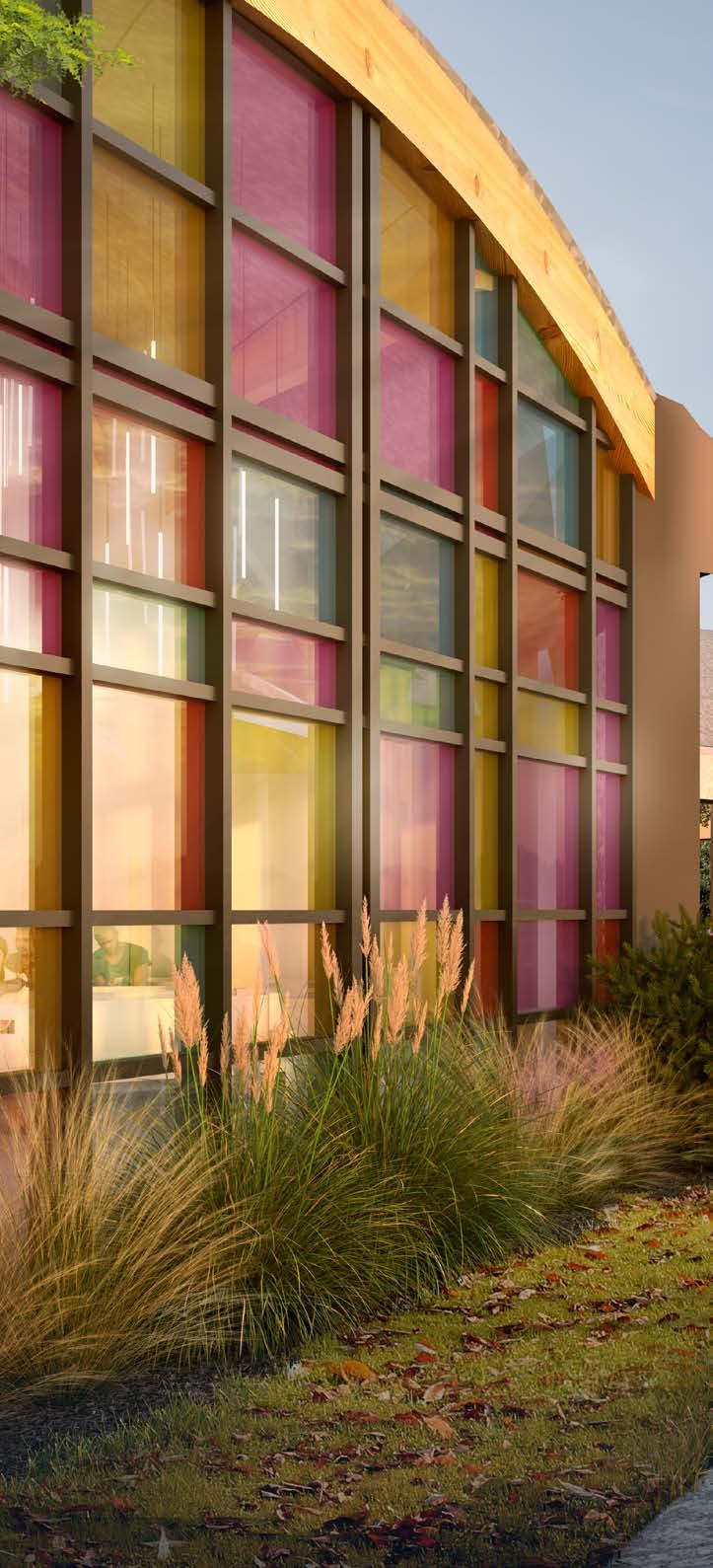
BEYOND SUSTAINABILITY ANNUAL REPORT 2

INTRODUCTION EXECUTING A FRAMEWORK MEASURING OUR PROGRESS BUILDING A HEALTHY COMMUNITY LOOKING TOWARD THE FUTURE 3
Papillio Domus Children's Hospice Design Competition
BY EMBRACING REGENERATIVE THINKING AND STRIVING FOR HARMONY BETWEEN HUMAN ACTIVITIES AND THE NATURAL WORLD, WE CAN CREATE MORE RESILIENT, EQUITABLE, AND THRIVING COMMUNITIES FOR PRESENT AND FUTURE GENERATIONS.

Our Regen CoLab is a talented team of collaborators who focus on building a culture of regenerative practice within Little.

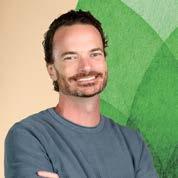

 Jen Todd AIA, CPHC®, NCARB
Philip Donovan AIA, LFA, LEED AP BD+C, NCARB
Vickie Breemes CSI, CCS, LEED AP BD+C, LFA, WELL AP
Scott Brideau LEED AP, CDT
Jen Todd AIA, CPHC®, NCARB
Philip Donovan AIA, LFA, LEED AP BD+C, NCARB
Vickie Breemes CSI, CCS, LEED AP BD+C, LFA, WELL AP
Scott Brideau LEED AP, CDT
BEYOND SUSTAINABILITY ANNUAL REPORT 4
© Daniel Mai, Human Resources Manager, Little
WORDS FROM OUR REGEN COLAB DESIGNING FOR HARMONY
At Little, we’re raising the bar for what qualifies as ‘Good Design.’ In the past, a design that looked great, solved a functional challenge, was on-budget and aligned the project stakeholders was deemed ‘Good Design.’
Today, in order to be truly good design, there are other criteria to consider: Did the project source materials from the other side of the planet? Good design should not be wasteful or use resources indiscriminately. Did the project consider the neighbors as stakeholders? Good design should build a sense of community. How much does it cost to operate the building, post-occupancy? Well designed buildings use much less energy, or better yet, restore depleted energy. Does the design influence the behaviors of its users in a way that enhances their physical and psychological well-being or improve their productivity and creativity? Good designs should serve as catalysts in shaping better experiences, healing divisions, and restoring balance. When we ask ourselves, 'what other questions should we consider to better expand a project's context to be responsive to more issues and opportunities?' we elevate the project's connectivity and its potential influence on the systems it touches.
As you can see, there are many layers of consideration, many more than just illustrated— so much so that the only way to wrestle with and reconcile all these forces and objectives is to consider the concept of Harmony. And we have no better example of Harmony in the physical world than to look to Mother Nature. Harmony and regenerative thinking share a fundamental principle: the recognition of interconnectedness and the pursuit of sustainable, dynamic balance and growth — a balance
that adapts to changes influencing the system over time . While they operate in different domains— harmony is often associated with music, nature, and philosophical concepts, while regenerative thinking is primarily focused on environmental sustainability and systemic approaches to problemsolving — they converge in their emphasis on fostering coherence, resilience, and renewal.
Moreover, achieving harmony between natural systems and human development requires a shift in societal values and priorities toward ecological stewardship and intergenerational equity. This change necessitates engaging a much broader group of stakeholders in collaborative design and decisionmaking processes, fostering environmental literacy and awareness, and promoting policies and incentives that reward regenerative practices. By investing in green infrastructure, sustainable technologies, and nature-based solutions, communities can not only mitigate the negative impacts of urbanization but also enhance resilience to climate change, promote social cohesion, and improve overall quality of life.
Little’s goal is to continue to reconsider what qualifies as ‘Good Design.’ Understanding and designing for the relationship between natural systems and humankind's built environment is integral to the health and sustainability of our ecosystems and societies. By embracing regenerative thinking and striving for harmony between human activities and the natural world, we can create more resilient, equitable, and thriving communities for present and future generations. This shift requires reimagining our approach to urban development, implementing ecological principles, and working collaboratively toward a more harmonious coexistence with nature. As is the case in Nature (not coincidentally), this is an evolution. In the following pages, you’ll see evidence of our striving to make your project be another rung up the ladder of Good Design.
5
INTRODUCTION EXECUTING A FRAMEWORK MEASURING OUR PROGRESS BUILDING A HEALTHY COMMUNITY LOOKING TOWARD THE FUTURE
WHY CHANGE IS NEEDED NOW:
A Global Imperative
Amidst the climate crisis, a global imperative for regenerative development emerges as a beacon of hope.
We must transition swiftly from exploitative practices to regenerative ones, where human activities restore and replenish the Earth's ecosystems. This transition calls for a paradigm shift in how we design, build, and inhabit our environments.
Regenerative development demands that we go beyond mere sustainability, actively restoring ecosystems, enhancing biodiversity, and sequestering carbon. Architects, urban planners, policymakers, and communities must collaborate to create built environments that regenerate natural resources, improve resilience to climate change, and foster social equity.
To accomplish these goals, we must embrace an integrative design process that applies regenerative principles into every aspect of development. From utilizing renewable energy and regenerative agriculture techniques to promoting green infrastructure and restoring degraded landscapes, every decision must prioritize the regeneration of our planet.
Regenerative development necessitates a fundamental shift in mindset, recognizing humanity's interconnectedness with nature and acknowledging our role as stewards of the Earth. By embracing regenerative practices, we can not only mitigate the impacts of climate change but also catalyze a thriving, resilient future for all life on Earth.

Scan the code to learn how honey bees, an integral part of our ecosystem, are reaching new historical population counts.
BEYOND SUSTAINABILITY ANNUAL REPORT 6
Annual Temperature Warm Nights Increase Decrease Annual Precipitation Heavy Precipitation Increase Decrease Sea Level Increase Fluctuating
THE HONEY BEE COMEBACK
NEAR-TERM BENEFITS OF TAKING ACTION TO LIMIT FUTURE WARMING
MAKING CHANGE FOR FUTURE GENERATIONS
Without deeper cuts in global net emissions, climate risks to the US will continue to grow.
LOW-CARBON ENERGY JOBS
REDUCED RISKS TO ECOSYSTEMS
A person born in North America in 2020 will experience more climate hazards during their lifetime, on average, than a person born in 1965.
IMPROVED AIR QUALITY
HEALTH BENEFITS
REDUCED RISKS TO BIODIVERSITY MORE OPTIONS FOR ADAPTATION
ECONOMIC BENEFITS
SOCIAL BENEFITS

7 INTRODUCTION EXECUTING A FRAMEWORK MEASURING OUR PROGRESS BUILDING A HEALTHY COMMUNITY LOOKING TOWARD THE FUTURE
0x 1x 2x 3x 4x 5x Global Warming Above Preindustrial Levels WILDFIRES 2.7°F 4.3°F 6.3°F RIVER FLOODS CROP FAILURE TROPICAL
DROUGHT HEATWAVES How Many Times More Occurrences
Change
CYCLONES
Source: Fifth National Climate Assessment | U.S. Global
Research Program
EXECUTING A FRAMEWORK
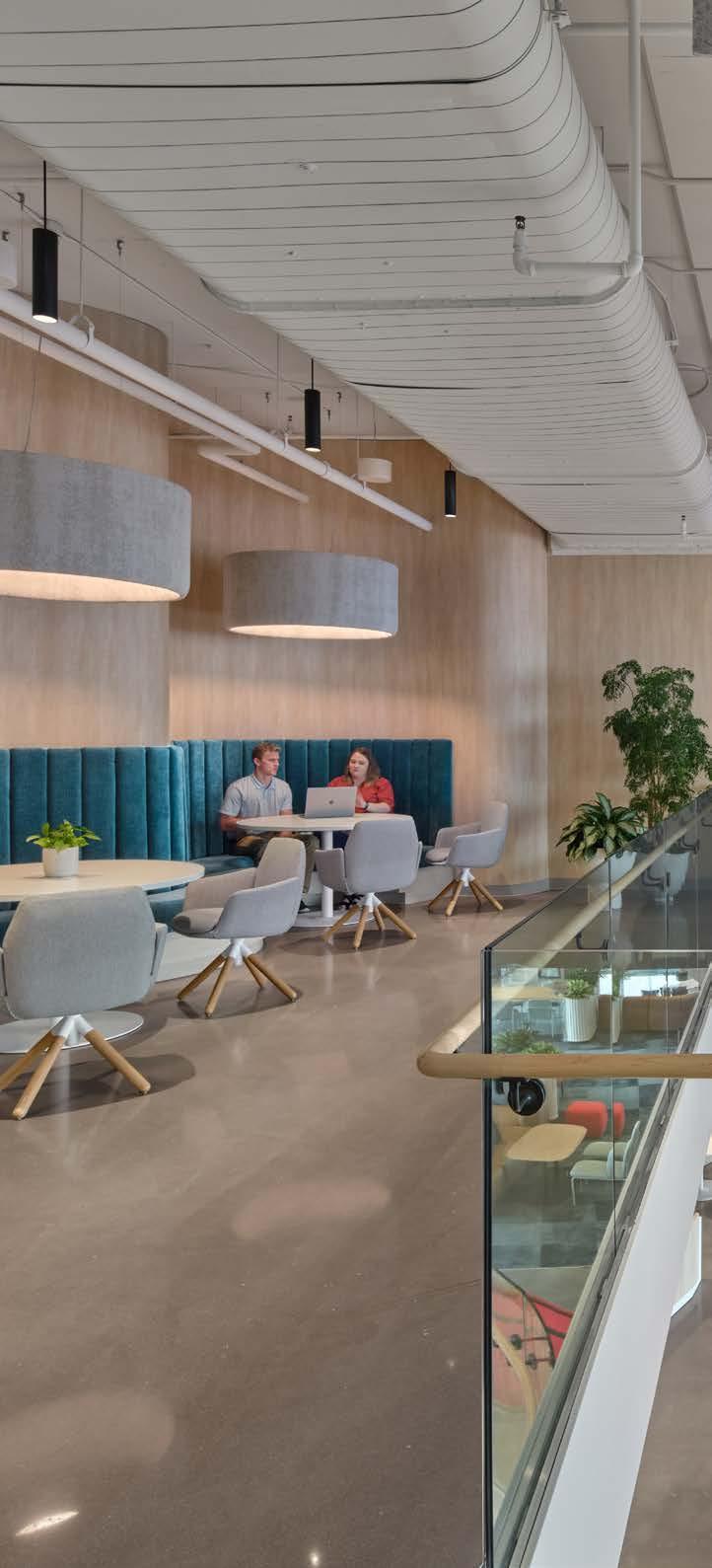
BEYOND SUSTAINABILITY ANNUAL REPORT 8
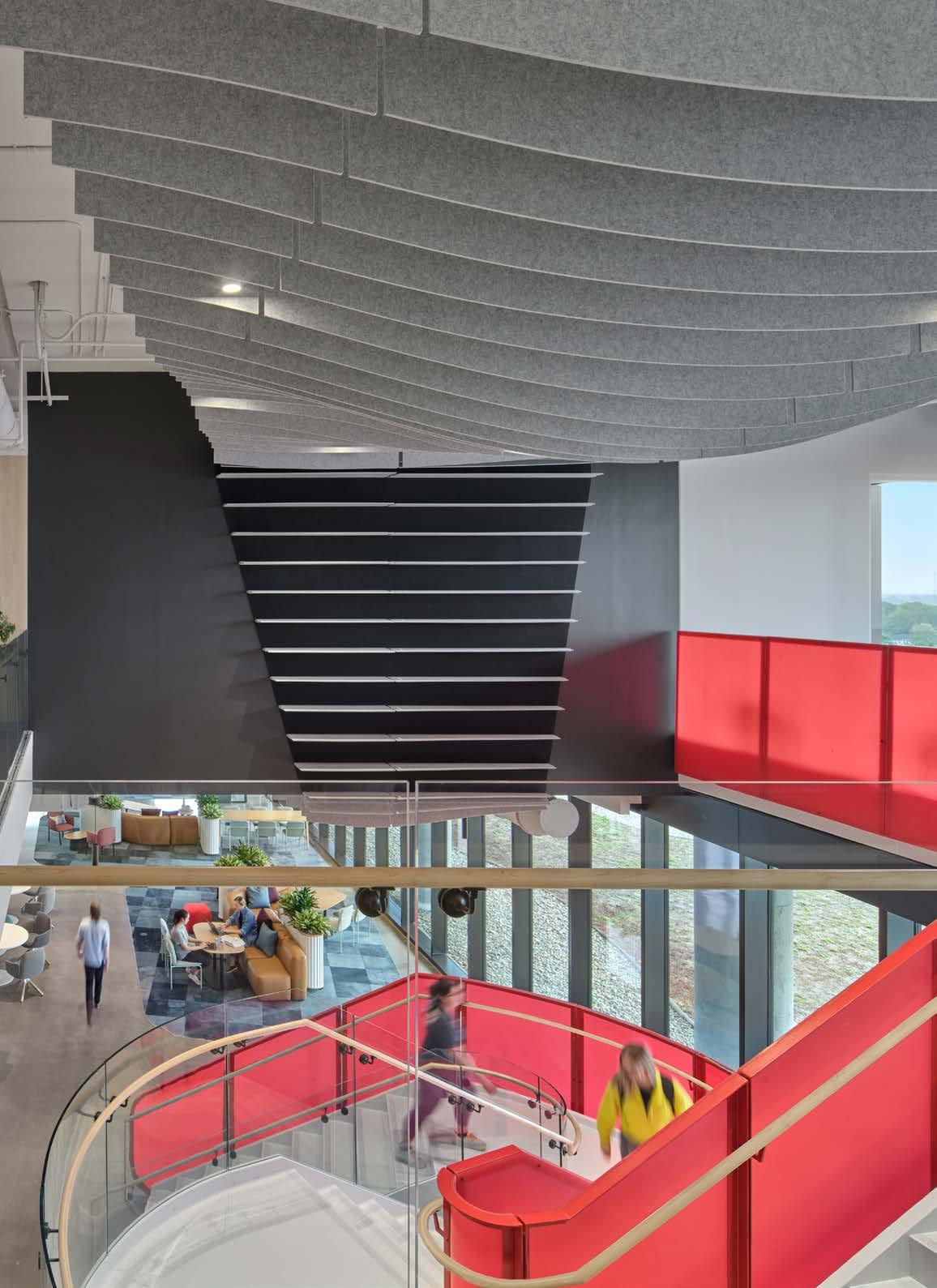
Northeastern University Charlotte, NC
INTRODUCTION EXECUTING A FRAMEWORK MEASURING OUR PROGRESS BUILDING A HEALTHY COMMUNITY LOOKING TOWARD THE FUTURE 9
OUR SUSTAINABILITY PHILOSOPHY

We work every day toward a goal of designing projects that not only do less harm, but ultimately do good — regenerative projects that achieve a successful balance between environmental, economic, and human factors.
Providence Day School Charlotte, NC
PATHWAY TO A REGENERATIVE FUTURE
On every project, we focus on the following areas of measurement:

Health
We design environments that elevate the health and wellness of people who use them.
Energy
We use a smart, responsible design approach to reduce the energy demand of our projects and practice.
Water
We design for the preservation and conservation of water.
Social Equity
We address universal design and social inequities through empathetic and intentional planning.
11 INTRODUCTION EXECUTING A FRAMEWORK MEASURING OUR PROGRESS BUILDING A HEALTHY COMMUNITY LOOKING TOWARD THE FUTURE
THE INTEGRATIVE PROCESS
Providing custom design solutions responsive to the unique conditions of a place - including financial, human, social and environmental factors - is the best, and perhaps the only, way to deliver holistically sustainable projects that lead to regenerative outcomes. For these reasons, Little is investing in the Integrative Process, working with the Regenesis Group, which is key to our shared future. Integrative work doesn’t mean coordinating disciplines that are otherwise working in separate silos, briefly tapping into the knowledge of a subject matter expert or simply brainstorming together at the onset of a project. Integrative work requires a consistent coming together of all project stakeholders to identify, analyze and uncover the entire “system” impacted by the project. This approach includes its place, end users, community culture, environment and more. Leveraging this approach allows us to design for the project’s highest potential, while also measurably elevating the performance of our clients.

INTEGRATIVE PROJECT FRAMEWORK
Little has spent the past year developing an Integrative Process Framework (IPF) to guide all our projects, aligning with our design approach and our culture of collaboration and performance.
For clients, this translates to a process that emphasizes transdisciplinary expertise, streamlined timelines, and clear, measurable project goals to elevate performance. Internally, it fosters heightened collaboration, improved workflow, and better documentation of project achievements. As we integrate the IPF as our best practices roadmap, we anticipate collective outcomes that will undoubtedly provide Results Beyond Architecture.
BEYOND SUSTAINABILITY ANNUAL REPORT 12 Prep Evaluation Conceptual Design Schematic Design Design Development Construction Documents Bidding and Construction Occupancy, Operations & Performance BUDGET MATERIALS WATER ENERGY HABITAT D ISCOV ER Y DE SIGN & CONS TR UC TI ON Conceptual Design Schematic Design Design Development Construction Documents Bidding and Construction Occupanc PREDESIGN DE SIGN & CONS TR UC TI ON VE VE VE VE VE CoVO CoVO CoVO Scope Refinement Path Workshops & Charettes Continuous Value Optimization CoVO Valu Engineering VE Aspects of the Key Sub-Systems TR AD ITI ON AL P ROC ES S IN TE GR AT IVE P ROC ES S Integrative Process (IP) ANSI Consensus Standard Guide 2.0 for Design and Construction of Sustainable Buildings and Communities
Reference: ANSI Standard
OUR DESIGN APPROACH
Our Design Approach starts by understanding our clients’ goals and aspirations. We ask questions and probe deeply to uncover unexpected opportunities that drive positive impact and positive outcomes. In addition, we make certain we consistently integrate all stakeholders throughout the entire project journey.
Using this insight, our transdisciplinary teams craft powerful design solutions that unlock the full potential of each project. Employing our integrative project framework fosters better collaboration and generates innovative ideas, enhancing design quality while ensuring efficient project delivery. This framework also emphasizes reminders for our teams to remain mindful of the health of our planet, actively seeking opportunities to create regenerative and efficient design solutions that benefit our clients, communities, and the environment.
Ultimately, our design process, combined with our integrative framework, forms the foundation of our unwavering commitment to deliver Results Beyond Architecture. Our design solutions go beyond aesthetics and functionality, enhancing client performance, enriching communities, and improving quality of life for occupants.
OUT OF THE MANY ARCHITECTURE FIRMS WE HAVE WORKED WITH, LITTLE STANDS OUT AS A FIRM WILLING TO TAKE A DEEPER DIVE INTO THE REALMS OF SUSTAINABILITY, INTEGRATIVE SYSTEMS
THINKING, AND REGENERATIVE DEVELOPMENT AND DESIGN. THIS IS NOT EASY STUFF.
REGENERATIVE DEVELOPMENT AND THE SUPPORTING PRACTICE OF THE INTEGRATIVE DESIGN PROCESS ARE ALL ABOUT DEVELOPING THE INNER-SELF AND THE OUTER PRACTICE OF EVOLUTIONARY HEALTH IN THE COMMUNITIES WE BUILD WITHIN – NOT THE NORMAL OUTCOMES OUR PROFESSION IS ACCUSTOMED TO DELIVER. LITTLE HAS BEEN MAKING STEADY PROCESS OVER THE LAST 10 YEARS. IT IS DIFFICULT TO HOLD A PERSISTENTLY EMERGING ETHOS IN A LARGE FIRM. WE ARE HONORED TO HAVE BEEN A PART OF THIS TURNING.
BILL REED PRINCIPAL REGENESIS, A PARTNER TO LITTLE IN EDUCATING EMPLOYEES ON THE INTEGRATIVE PROCESS
13 INTRODUCTION EXECUTING A FRAMEWORK MEASURING OUR PROGRESS BUILDING A HEALTHY COMMUNITY LOOKING TOWARD THE FUTURE
DESIGN APPROACH (high-level) NETSIL NA D L E A RN TODISCOVEROPPORTUNITIES CRAFT EXPERIENCESTHATSOLVEFOR YO U R V I S I NO SLAOGDNA ELEVATEYOURPERFORMANCE THROUGHDESIGN listen craft elevate RESULTS
MATERIALS TRANSPARENCY STANDARD
Little's Material Transparency Standard supports our belief that every decision made in a project should contribute positively to our collective regenerative future.
Aligning with our focus on Health, Energy, Water and Social Equity (HEWS), this Standard is designed to simplify the material selection process while upholding the project parameters established by our clients. Little's Material Transparency Standard provides a clear framework and tools for selecting materials from manufacturers who are transparent, invest in research, and share in the sustainable values of Little and our clients. Framed around four steps and a good, better, best approach, the Materials Transparency@ Little is flexible for every project team member.

Through the demonstration of her passion and materials knowledge, Regen CoLab Director Vickie Breemes has been selected to serve on the Mindful Materials AEC Forum.
The Mindful Material Forums assemble 40+ organizations of proven materials leaders in the building industry to find common ground, identify alignment opportunities, build shared resources/knowledge, and accelerate impact.
Mindful Materials






BEYOND SUSTAINABILITY ANNUAL REPORT 14
MEASURING
PROJECT PERFORMANCE
Over the past year, Little has made significant updates to our project reporting platform. We've introduced the new Project Performance Portal, which allows us to track and measure the essential data as it relates to a project’s performance of Health, Energy, Water and Social Equity (HEWS). This internal tool offers real-time metrics across Little’s extensive project portfolio, facilitating transparent reporting of project performance across all our studios and offices.

Our Project Performance Portal helps us track essential project data related to Health, Energy, Water and Social Equity.
15 INTRODUCTION EXECUTING A FRAMEWORK MEASURING OUR PROGRESS BUILDING A HEALTHY COMMUNITY LOOKING TOWARD THE FUTURE
ELEVATING CLIENT PERFORMANCE through

PAPILLIO DOMUS CHILDREN'S HOSPICE
Design Competition
We recognized the lack of pediatric-specific hospice facilities in the United States and the difficult choice many families face between receiving end-of-life care in a hospital or at home. With this in mind, we sought to envision a "third place" that would offer a nurturing and supportive environment.
The mass timber curving structure, stained glass, and skylights create a patient experience that feels welcoming and celebratory, while also sacred.
HAYWOOD COMMUNITY COLLEGE
Clyde, NC
Ø Lighting Power Density of 0.26 W/sf
Ø The use of natural materials nestles the building into the site.
Ø Through thoughtful design, several mature trees were preserved and the campus stormwater management was improved.
The use of passive heating and cooling strategies were implemented to elevate efficiencies, while solar flowers provide an opportunity to not only capture solar energy, but also to educate visitors.

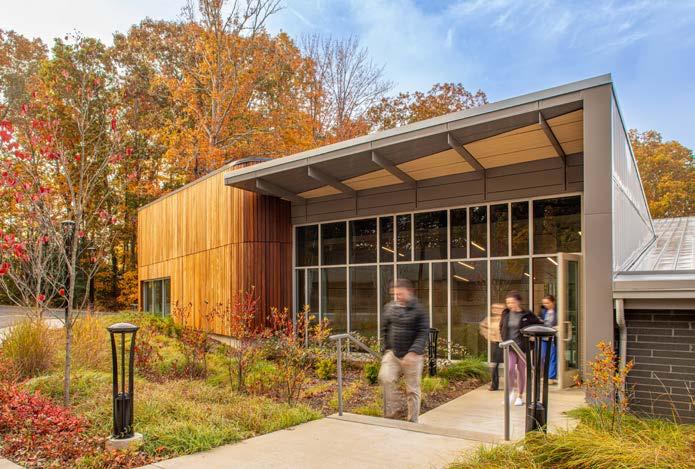
BEYOND SUSTAINABILITY ANNUAL REPORT 16
Health, Energy, Water,
Every project is unique; therefore, the measurable achievements for each are also unique. We celebrate every effort that moves us toward a regenerative future.

LEVINE CHILDREN'S HOSPITAL SPECIALTY OUTPATIENT CENTER
Charlotte, NC

90% PATIENT AND FAMILY SATISFACTION
Inclusive language as well as hide-and-seek prompts provide playful activities for patients and families. A variety of energetic spaces provide a sense of hopefulness.
The main corridor is aligned with exterior window walls to maximize natural light and views. The extensive use of themed graphics provide a calming, yet playful atmosphere.
ALDIE FIRE STATION
Aldie, VA
Ø Views to exterior from 93.49% of regularly occupied spaces.
Ø 24.7% energy cost savings (5.2% from renewables – PV)
Ø 41% water use reduction
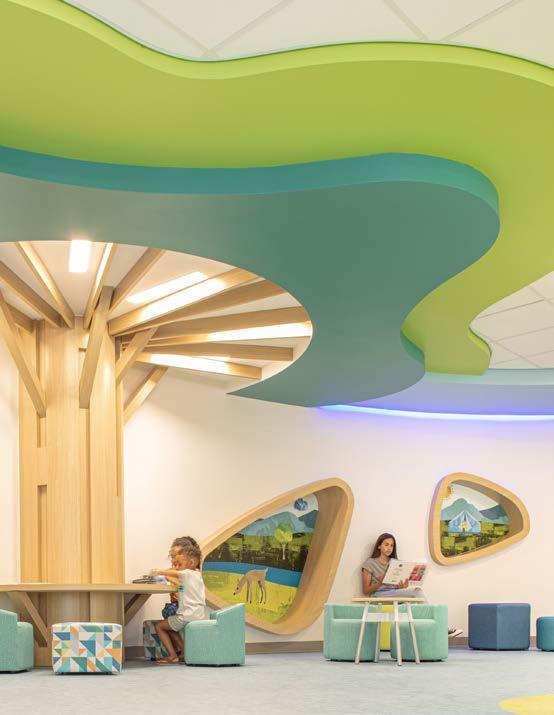
17
INTRODUCTION EXECUTING A FRAMEWORK MEASURING OUR PROGRESS BUILDING A HEALTHY COMMUNITY LOOKING TOWARD THE FUTURE
and Social Equity
TARGETING LEED SILVER
ELEVATING CLIENT PERFORMANCE through Health, Energy, Water,

NORTHCHASE LIBRARY
Wilmington, NC

35% REDUCTION OF POTABLE WATER USAGE
Ø No permanent irrigation used, all native or adapted plantings.
Ø Stormwater management includes extensive use of porous concrete, as well as permeable pavers and grass pavers.
Ø Outdoor covered pavilion with highvolume, low-speed fan for events and activities even in the hot summers.
Ø Large clerestory for all-day natural lighting in main room and use of Vertical Solar fins on West façade.
Ø No high VOC-containing materials in specifications and material selections.
Ø Enhanced exposure to natural areas allow for biophilic experiences.
FIRST CITIZENS BANK
Mission Viejo, CA
Using energy model data compared to real time usage revealed a higher monthly energy use than expected. This comparison helped identify operational adjustments necessary to align more closely with predictions, and save unnecessary utility costs.
In Collaboration with New Hanover Parks and Gardens and NC DOT, a pedestrian and bike connection to the larger community was created.
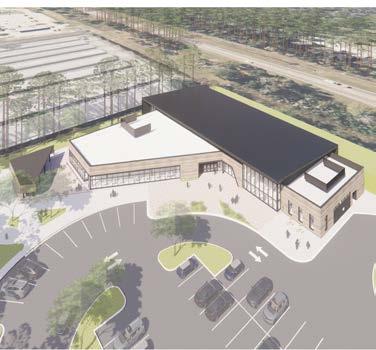
Ø High-volume, low-speed fans allow for improved thermal comfort in clerestory spaces.
Ø Thermally broken rainscreen, mineral wool continuous wall cavity insulation, and thermally broken glazing framing system selections.
Ø High performance LED fixtures reduce lighting power needs.
BEYOND SUSTAINABILITY ANNUAL REPORT 18
and Social Equity
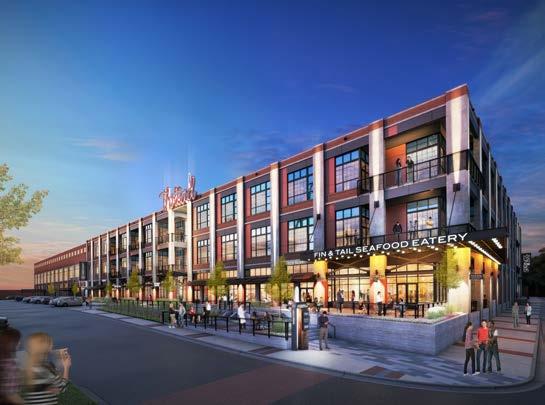
Every project is unique; therefore, the measurable achievements for each are also unique. We celebrate every effort that moves us toward a regenerative future.
THE THREAD
Rock Hill, SC
20 OF EMBODIED CARBON SAVED METRIC TONS

An anchor for the Knowledge Park District of Rock Hill, the project pays tribute to its 1946 deep textile community heritage by balancing the preservation of historic elements while offering modern services.
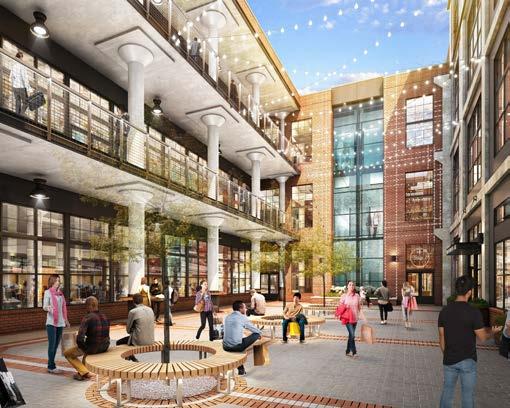
25% REDUCTION OF INTERIOR WATER USAGE


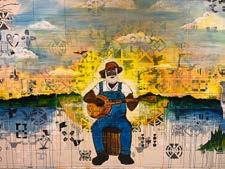
HILTON HEAD
HIGH SCHOOL
Hilton Head, SC
Ø The exterior courtyard allows for outdoor learning opportunities and social gathering.
Ø High performance thermally broken windows (SHGC: .23) are used.
Ø An upgraded chiller and boiler used with High Efficiency Systems.
Ø Collaboration spaces provide diverse and inclusive options for students of all backgrounds and learning styles.
19 INTRODUCTION EXECUTING A FRAMEWORK MEASURING OUR PROGRESS BUILDING A HEALTHY COMMUNITY LOOKING TOWARD THE FUTURE
Preservation of local murals pays tribute to Hilton Head Island's landscapes and vibrant Gullah Geechee Heritage.
VETERANS AFFAIRS OUTPATIENT CENTER
Fredericksburg, VA

The Healing Gardens
A series of garden rooms aid in the healing of veterans and staff by engaging the senses and calming the mind.
Memorial Garden: A reflective outdoor room to honor veterans within every branch of service.
Patient Healing Garden: An understated, seasonally changing garden engages a patient's senses to foster a sense of peace and calming.
Staff Garden: A modest garden space "to get away", to decompress and provide a sense of relief.
Washington Park: An anti-garden, with simplified design, to reduce stimuli and provide PTSD patients with a calming outdoor space.
This non-traditional location for a University, near Charlotte Center City, elevates opportunity and ease of access through multiple commuting means.

A central monumental stair connects the space, encouraging movement, while floorto-ceiling windows allow for maximum daylight and views of the city.

BEYOND SUSTAINABILITY ANNUAL REPORT 20
CLIENT PERFORMANCE through Health, Energy, Water,
UNIVERSITY Charlotte,
ELEVATING
NORTHEASTERN
NC
34% INTERIOR WATER USAGE REDUCTION TARGETING LEED SILVER
TARGETING 2 GREEN GLOBES
and Social Equity
Every project is unique; therefore, the measurable achievements for each are also unique. We celebrate every effort that moves us toward a regenerative future.
UNION COUNTY SOUTHWEST
REGIONAL LIBRARY
Waxhaw, NC

Ø A new sidewalk connection bridges the gap between the library and the surrounding community, including both Cuthbertson Middle and High School.
Ø The site and building were designed around an existing wetland area that now serves as an amenity in the “backyard” of the library.
Ø The total disturbed area of the site was minimized to preserve a wooded buffer between the library and the surrounding neighborhood.
Ø There were no catch basins or underground storm drain piping used on the project except for roof drainage. Stormwater flows evenly through vegetated swales and stone filter areas into the existing wetland area adjacent to the site.
Ø Native plant species were used to minimize the need for irrigation.


GREENSBORO
DAY SCHOOL
Greensboro, NC
Ø A full service health center supports the entire campus with full time staff and exam rooms.
Ø The building orientation maximizes northern light exposure and shading of existing mature trees.
Ø Daylighting analysis informed the location and sizing of shading devices to reduce glare.
Ø A water filtration system improves water quality in addition to providing water bottle fillers to encourage healthy habits and reduce plastic waste.
Ø The building encourages convergence and collaboration of various academic levels, backgrounds, and experiences among students.
21 INTRODUCTION EXECUTING A FRAMEWORK MEASURING OUR PROGRESS BUILDING A HEALTHY COMMUNITY LOOKING TOWARD THE FUTURE
MEASURING OUR PROGRESS
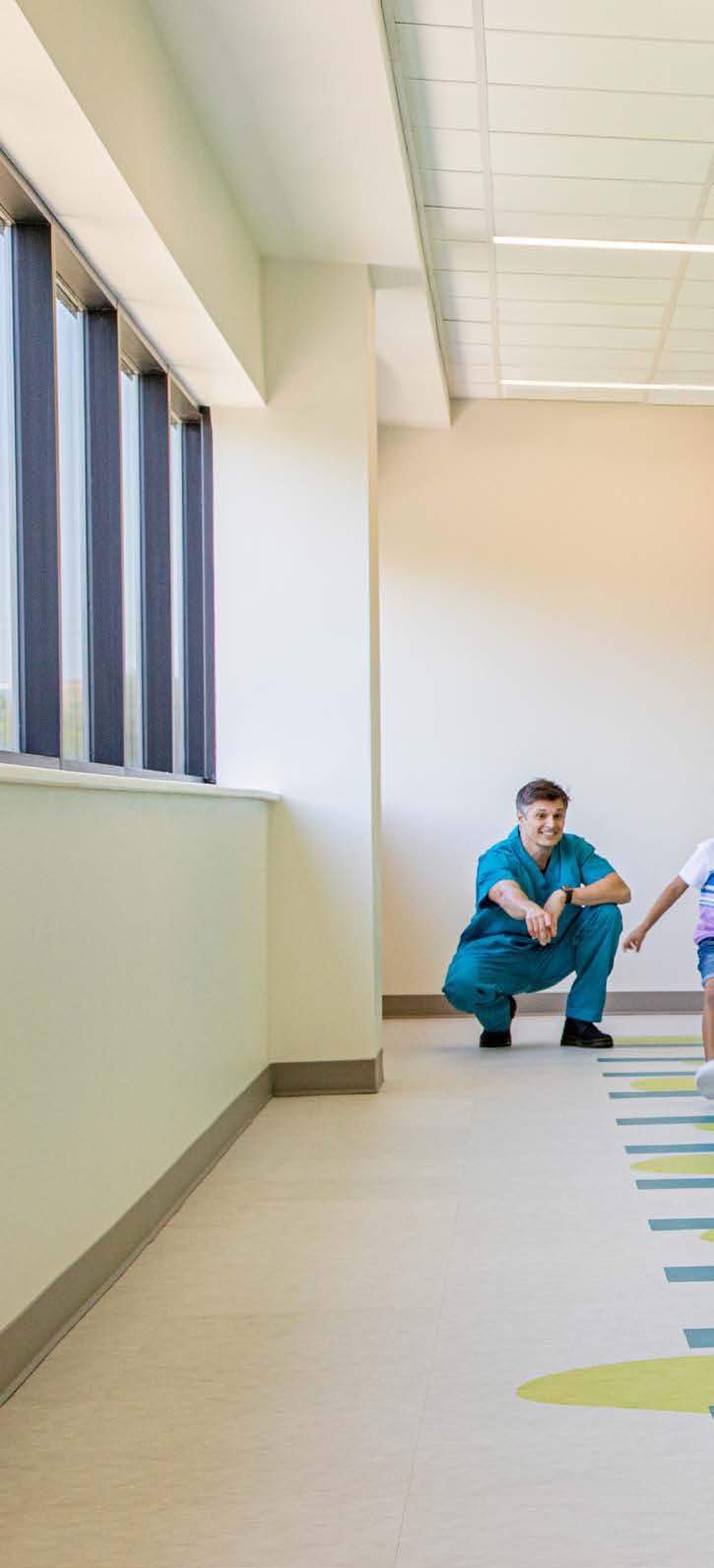
BEYOND SUSTAINABILITY ANNUAL REPORT 22
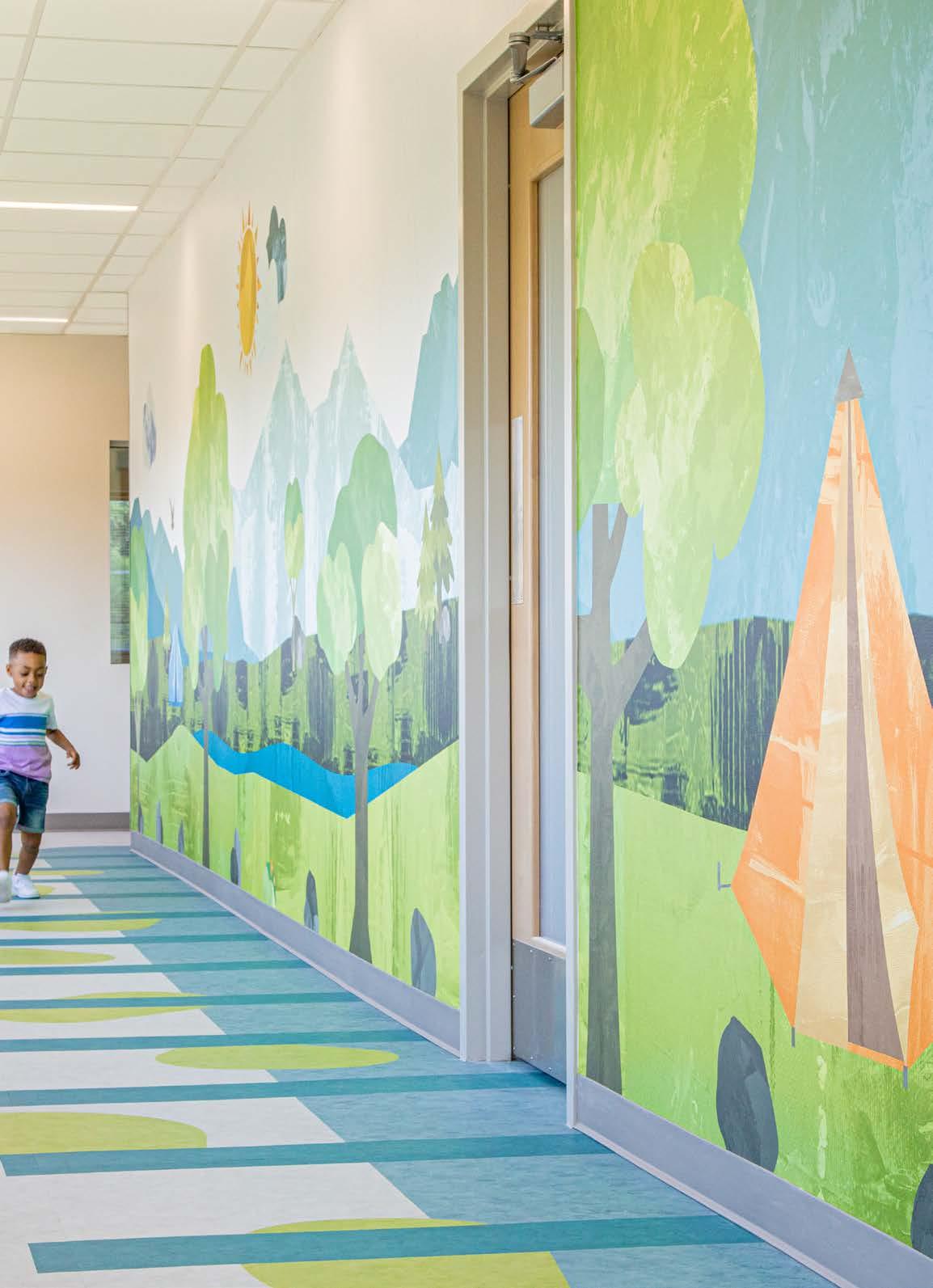
INTRODUCTION EXECUTING A FRAMEWORK MEASURING OUR PROGRESS BUILDING A HEALTHY COMMUNITY LOOKING TOWARD THE FUTURE 23
Charlotte, NC
Levine Children's Hospital Multi-Specialty Outpatient Center
Scope 1

Little’s Direct Paid Building Utilities beyond what is included in the lease agreements for our office locations:
6 METRIC TONS OF CARBON DIOXIDE
Last year, Little made a commitment to achieve Carbon Neutrality by 2030 . Our first step to achieve this goal has been to measure/set our carbon impact baseline. We set this baseline using the United States Environmental Protection Agency’s (EPA) Greenhouse Gas Protocol, widely known as Scope 1,2,3 Emissions . This protocol is a consistent measurement framework applicable to all types of businesses. It promotes transparency, knowledge sharing, action, and community.
Little's Greenhouse Gas (GHG) Emissions for 2023 vs
Scope 2
INDIRECT EMISSIONS
Little’s Utility Use included in our lease agreements for our office locations:
697 METRIC TONS OF CARBON DIOXIDE
Scope 3
SUPPLY CHAIN EMISSIONS
Little’s GHG Emissions generated from business travel (including air, car, train, light rail, taxi, and ride-share) and employee commuting:
169 METRIC TONS OF CARBON DIOXIDE
872 METRIC TONS TOTAL CARBON EMISSIONS IN 2023 AVERAGE METRIC TONS PER EMPLOYEE METRIC TONS PER EMPLOYEE IS INDUSTRY AVERAGE 1.9 4-6
BEYOND SUSTAINABILITY ANNUAL REPORT 24
CARBON NEUTRALITY BY
2030 DIRECT EMISSIONS
WHAT'S NEXT?
To achieve carbon neutrality now and in the future, purchasing offsets is required. Little is actively pursuing opportunities through the Voluntary Carbon Market* that:
1. Support Little’s Corporate Values
2. Have a Positive Impact on the Communities We Serve
3. Are 3rd Party Verified
4. Align with the University of Oxford’s “The Oxford Principles for Net Zero Aligned Carbon Offsetting”
*VOLUNTARY CARBON MARKET IS A CRITICAL TOOL THAT FUNDS CLIMATE ACTION INCLUDING, BUT NOT LIMITED TO, CARBON REMOVAL VIA DIRECT AIR CAPTURE, BIODIVERSITY AND NATURE CONSERVATION, CARBON AVOIDANCE, AND SEQUESTRATION INNOVATION ACROSS VARIOUS INDUSTRIES”. RESOURCE CLOVERLY.COM

In 2024, Little will be expanding our GHG emissions to include purchased goods, starting with our top monthly expenditures.
Little has work to do. We will focus on data refinement by setting annual goals for reduction, aligning with more providers that are carbon neutral, improving our expense reporting process, refining travel guidelines, and continuing to advocate for smart choices.
25 MEASURING OUR PROGRESS
© John Walker, Workplace Studio Principal, Little
INTRODUCTION EXECUTING A FRAMEWORK MEASURING OUR PROGRESS BUILDING A HEALTHY COMMUNITY LOOKING TOWARD THE FUTURE
IMPROVING OUR INTERNAL OPERATIONS
At Little, we are committed to realizing a regenerative future that positively impacts both people and the planet. We are proud of our growing firmwide efforts that propel us along this path in our internal operations and community engagements.
As we continue to elevate the performance of our clients by delivering Results Beyond Architecture, we are continuing to challenge ourselves by elevating our own performance in our work toward a regenerative future. Over the past year, Little made several strategic acquisitions in the DC and Charleston markets, allowing our existing offices to grow in expertise and better serve our clients. As part of this growth, we have secured new office locations in these markets that are pursuing LEED and WELL Certifications. These offices are in addition to Little’s existing Charlotte office that recently renewed its WELL Certification.

Having achieved WELL Silver and LEED Silver in 2018, our 55,000 square-foot space is being re-certified under the latest WELL platform and stretching to achieve a higher certification.
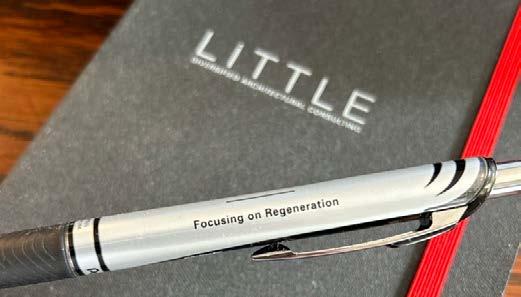
SMALL CHANGE, BIG IMPACT
As a daily reminder of the role we all play in shaping a regenerative future, Little is committed to reducing our carbon footprint.
Introducing refillable pens helps drive down our Scope 3 carbon emissions and supports our collective commitment to use less and do more.
BEYOND SUSTAINABILITY ANNUAL REPORT 26
LITTLE CHARLOTTE

Now located in McLean, VA, our recently completed 8,000 square-foot office space is pursuing LEED Silver and WELL Silver.

As we continue our growth in the Charleston market, we are moving our office to a LEED neighborhood rich in history. The new 4,700 square-foot space will be pursuing LEED Silver and WELL Silver.
Little Waste Program
The Little Waste Program seeks to educate, challenge, and inspire our employees, clients, and communities to achieve zero waste.
Composting in our Charleston and DC offices will start this year.

5,240 LBS OF WASTE DIVERTED FROM THE LANDFILL
5,198 MILES WERE OFFSET equivalent to
27
INTRODUCTION EXECUTING A FRAMEWORK MEASURING OUR PROGRESS BUILDING A HEALTHY COMMUNITY LOOKING TOWARD THE FUTURE
(FUTURE) LITTLE CHARLESTON
LITTLE DC
IMPROVING OUR OUTREACH

For our employees, it is incredibly important to understand how the environments they create have an impact on the people and communities they are being created for.
That's why we're dedicated to unleashing an entrepreneurial spirit and giving employees to freedom to explore new ideas, take bold chances and continuously learn. To foster a culture of lifelong teaching and learning, we offer continuing education credit courses, values-driven courses and comprehensive curriculum focused on sustainable and regenerative design, project management and leadership excellence.
110 REGISTERED ARCHITECTS
6 REGISTERED LANDSCAPE ARCHITECTS
15 IIDA PROFESSIONALS
24 LICENSED ENGINEERS
447 EMPLOYEES FIRMWIDE
21 WELL ACCREDITED PROFESSIONALS
1 FITWEL AMBASSADOR
3 LIVING FUTURE ACCREDITED PROFESSIONALS
2 SITES ACCREDITED PROFESSIONALS
1 WIREDSCORE ACCREDITED PROFESSIONAL
87 LEED ACCREDITED PROFESSIONALS
1 BUILDING ENERGY MODELING PROFESSIONAL
2 GREEN GLOBES CONSULTANTS
2 CERTIFIED ENERGY MANAGERS
2 TRUE ADVISORS
1 CERTIFIED PASSIVE HOUSE CONSULTANT
Industry Engagements
29 ENGINEERING NEWS-RECORD TOP GREEN DESIGN FIRMS
Client Events
We believe collaboration, enthusiasm and innovative thinking spark breakthrough ideas that create a better future. That’s why we seek out opportunities to engage with our clients and peers across industries. In addition to organizational memberships and conference attendance, we host educational events at our offices so that we develop diverse perspectives and reinforce best practices to foster inclusive, equitable and sustainable spaces for all.
IN RETAIL ENR TOP GREEN DESIGN FIRMS BY SECTOR
SUSTAINABILITYFOCUSED SPEAKING ENGAGEMENTS

SUSTAINABILITYFOCUSED SOCIAL MEDIA AND INSIGHTS BLOG POSTS
SUSTAINABLE PROJECT AWARDS

29
#
#
4
08
07
68
Regenerative Design Forum: Newport Beach Office
INTRODUCTION EXECUTING A FRAMEWORK MEASURING OUR PROGRESS BUILDING A HEALTHY COMMUNITY LOOKING TOWARD THE FUTURE
Regenerative Design Forum: Orlando Office
COMMITMENTS THAT SPARK CHANGE
Little is proud to be at the forefront of the movement toward carbon-neutral buildings. In alignment with our peers and in harmony with our shared vision, we acknowledge our professional responsibility and the pressing need for measurable change.

AIA 2030 Challenge
Since 2008, Little has been a signatory of the AIA 2030 Commitment - actively reporting our progress on reducing the energy consumption of the buildings we design since 2010. By participating in this challenge, we not only improve the performance of our clients' projects, we also enhance the quality of people's lives.
As part of the 2030 Challenge, we have committed to achieving carbon neutrality for the buildings we design. In 2005, 50% reduction was the target from a regional or country average baseline. Currently, until 2025, the target has been elevated to 80%. Our work continues!
Architecture 2030

In 2023, five projects were designed and reported by Little’s Structural Engineering Team with an Embodied Carbon Model in Second Reporting Year (2023), and we’ve focused on the elevation of carbon reduction through our material selections and in our structural specifications.
SE 2050

This year, Little’s engineering team focused their efforts on advocating for greater lowGWP refrigerant availability allowing for a broader use across a variety of projects.
MEP 2040 ChallengeCarbon Leadership Forum
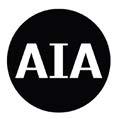
2023 was a pivotal year, and progress was made towards the AIA Materials Pledge. Through the development of “Materials Transparency@ Little" standard, highlighted in this report, we’ve simplified an otherwise complex process, that is truly integrative, and will elevate our progress.
Architecture and Design Materials Pledge

We became a signatory firm to COP26 in 2021 and have continued to work toward these established goals. To learn more click here
BEYOND SUSTAINABILITY ANNUAL REPORT 30
Materials
Pledge

31 31 INTRODUCTION EXECUTING A FRAMEWORK MEASURING OUR PROGRESS BUILDING A HEALTHY COMMUNITY LOOKING TOWARD THE FUTURE
High efficient, water cooled chillers provide building occupants comfortable spaces while reducing electricity needs
The Nature Conservancy
Arlington, VA
AIA 2030 COMMITMENT
As part of our AIA 2030 commitment, we firmly believe in the importance of transparent reporting. We share performance-related data with our industry peers through the AIA's Design Data Exchange, a collaborative platform that facilitates discourse and accountability within the industry.
Our Numbers
2023
12,751,633 Gross Square footage (GSF) reported to AIA 2030
Current Industry Target %
* Lighting Power Density (LPD): The total input power of the lighting system per square foot.
How Site Energy Use Intensity (EUI) is Calculated:
* AIA 2030 Reporting for Whole-Building Projects only, Little has started measuring the impact of Interior projects in addition to whole building
BEYOND SUSTAINABILITY ANNUAL REPORT 32
SPACE HEATING PUMPS & FANS SPACE COOLING LIGHTING HOT WATER OTHER LOADS ENERGY CONSUMPTION ON-SITE ENERGY PRODUCTION (kBtu / YEAR) FLOOR AREA (SQ. FT.) MEASURED FOR 365 DA YS 100 80 60 40 20 0 27.08%
PREDICTED LPD*
REDUCTION
Not modeled Modeled 91.15% 8.85% EMBODIED CARBON (% GSF OF PROJECTS) *
Not modeled Modeled 63% ENERGY MODEL (% GSF OF PROJECTS) 37%
Acknowledging the need for improvement and embracing responsibility as we approach 2030 is crucial for progress. By collectively embracing regenerative principles and taking concerted action, we can work towards a more sustainable and equitable future as we approach 2030 and beyond.
Utilizing data to inform design decisions, Little is giving equal emphasis to embodied and operational carbon measurements. While AIA 2030 is currently only focused on reporting "whole building" embodied carbon, Little has been working diligently on analyzing embodied carbon for both new construction as well as interiors.

33
Day School Greensboro, NC INTRODUCTION EXECUTING A FRAMEWORK MEASURING OUR PROGRESS BUILDING A HEALTHY COMMUNITY LOOKING TOWARD THE FUTURE
Greensboro
100 80 60 40 20 0 2020 2021 2022 2023 Industry Average 2019 51.22% 53.53% 40.80% 41.38% 37.66% 48.00% REDUCTION IN LITTLE’S AVG PERCENTAGE PREDICTED ENERGY USE INTENSITY ( p EUI) FOR THE PAST FIVE YEARS: Current Industry Target is set at 80% 62 PROJECTS REPORTED FOR EMBODIED CARBON EMBODIED CARBON Emissions "stored" in materials & created during construction OPERATIONAL CARBON Emissions released over lifetime to heat, cool & electrify TOTAL CARBON FOOTPRINT + =
BUILDING A HEALTHY COMMUNITY

BEYOND SUSTAINABILITY ANNUAL REPORT 34

INTRODUCTION EXECUTING A FRAMEWORK MEASURING OUR PROGRESS BUILDING A HEALTHY COMMUNITY LOOKING TOWARD THE FUTURE 35 321 Coffee Durham, NC
MAKING A DIFFERENCE:
Healthy Company, Healthy Community
Over the past year, Little has contributed volunteer hours and/or pro bono services to the following organizations:
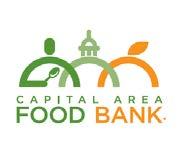
















Over the past year, Little has contributed monetary donations to the following organizations:
321 Coffee
A Gift for Teaching
Advent Health Foundation
American Heart Association
ArtPop Street Gallery
Atrium Health Foundation
Black Women in Architecture Network
Boys and Girls Club of America - We Care Event
Catawba Lands Conservancy
Charlotte Center for
the Humanities
Children's National
Medical Center
Classroom Central
Coalition for Adequate
School Housing
Community of Hope
Cystic Fibrosis Foundation
Design for Freedom
Durham YMCA
Foundation for Orange
County Public Schools
Goodyear Arts
Hoag Hospital
Loudoun Education Foundation
Marbles Children's Museum
McLeod Health Foundation
Mindful Materials
Miriams Kitchen
NC Performing Arts Center
North Carolina Zoo Society
Orange County United Way
Saint Elizabeth's Hospital
So Others Might Eat



Lee Community Center

Susan G. Komen Foundation
Sustain Charlotte
The Green Heart Project
The Wendt Center for Loss and Healing
United Arts Central Florida
United Way of Central Carolinas
United Way of Orange County
Wake Tech Foundation
BEYOND SUSTAINABILITY ANNUAL REPORT 36
James






MLK Book Drive
In celebration of MLK Day, Little hosts an annual firmwide book drive to collect new and gently used culturally inclusive books, honoring Dr. King's legacy. These books reflect diverse cultures and experiences, fostering a sense of belonging and empathy among all readers.
Our 2nd annual MLK Book Drive was a tremendous success. After donating 177 books to our local communities in 2023, we set a goal to collect 250 books during our 2024 drive. We are delighted to share that we collected 662 books firmwide— exceeding our target by an impressive 165%!

37
INTRODUCTION EXECUTING A FRAMEWORK MEASURING OUR PROGRESS BUILDING A HEALTHY COMMUNITY LOOKING TOWARD THE FUTURE
Rebuilding Together: National Rebuilding Day
Summer Camp Involvement at Marine Discovery Center
Urban Farm at Enston Home / The Green Heart Project
Helping Hands Christmas Event
Habitat for Humanity House Build
Rise Against Hunger
INSPIRING THE NEXT GENERATION
National Organization of Minority Architects (NOMA)
Project Pipeline
Fostering diversity and advocacy in our profession, the Project Pipeline camp introduces middle and high school students to the architecture and design industry.
HBCU Professional Development Program
The NOMA Historically Black Colleges and Universities (HBCU) Professional Development Program fosters mentorship and self-advocacy by creating additional opportunities for HBCU students. The program provides students with the resources they need to transform their professional journey and promotes workplace culture through diversity of experience among employees.
Foundation Fellowship
Established in partnership with the AIA Large Firm Round Table, the NOMA Foundation Fellowship creates mentorship opportunities for students across the country to broaden the pipeline of minority designers within the field of architecture.
As a proud partner of NOMA, Little served as a President’s Circle Sponsor of the HBCU Professional Development. Additionally, we hosted two NOMA Future Faces Fellows.
ACE Mentor Program
The ACE Mentor Program informs and excites high school students about career opportunities in Architecture, Engineering and Construction. Through this program, students foster relationships with industry professionals while receiving support to develop both fundamental and technical skills necessary for success in these fields.
In 2023, Little engaged in active mentorship for the 2023-2024 cohort and produced a virtual design lesson for the ACE Raleigh cohort, demonstrating our commitment to education and fostering young talent.
WANT TO KNOW MORE? CHECK OUT OUR WEBSITE



BEYOND SUSTAINABILITY ANNUAL REPORT 38








39 INTRODUCTION EXECUTING A FRAMEWORK MEASURING OUR PROGRESS BUILDING A HEALTHY COMMUNITY LOOKING TOWARD THE FUTURE
PRIORITIZING HEALTH AND INCLUSIVITY FROM WITHIN
We prioritize and celebrate diversity in all its forms, embracing a culture of respect, acceptance, and tolerance.
Our core values of CARE, STRETCH, and SPARK are deeply intertwined with our commitment to a regenerative future and our passion for creating purposeful spaces for our clients and communities. We firmly believe that our success in elevating client performance and delivering Results Beyond Architecture relies on creating an inclusive environment where every employee feels valued, included, and empowered to contribute their unique experiences and perspectives.
To nurture a sense of community and belonging, we’ve implemented firmwide learning programs focused on building inclusiveness and addressing bias so that we establish a collective understanding and expectation of how we care for each other and our clients. We also offer voluntary Special Interest Groups (SIGs) that are open to all Little employees and serve as platforms for connecting colleagues who share similar interests, promoting awareness and fostering positive relationships. Additionally, our mentorship programs provide employees with opportunities for growth, enabling them to advance further and faster in careers.
Through these intentional actions, we aim to cultivate an engaged, diverse, and inclusive workplace where everyone feels respected, appreciated, and inspired to make a meaningful impact.



BEYOND SUSTAINABILITY ANNUAL REPORT 40
International Women's Day
Black History Month Event
Pride Month "Napkin Sketch" Competition
Little's Demographics
GENDER
447 EMPLOYEES
20% GROWTH IN DIVERSITY IN THE PAST 5 YEARS
ETHNICITY / RACE
29.7% WORKPLACE DIVERSITY
GENERATIONS
20% GROWTH IN NO. OF EMPLOYEES FROM 2022
10 OF 12 AFFIRMATIVE ACTION GOALS ACHIEVED
41
AMERICAN
BLACK
2
WHITE NOT SPECIFIED 70.6% 10.1% 2.2% 8.3% 6.7% 0.6% 1.3% MALE FEMALE 52% 48% BABY
GENERATION
MILLENNIALS
GEN
GEN Z 12% INTRODUCTION EXECUTING A FRAMEWORK MEASURING OUR PROGRESS BUILDING A HEALTHY COMMUNITY LOOKING TOWARD THE FUTURE 40% 35% 13% 12%
INDIAN/ALASKAN NATIVE ASIAN
OR AFRICAN AMERICAN HISPANIC OR LATINO
OR MORE RACES
BOOMERS 13%
X 35%
OR
Y 40%
LOOKING TOWARD THE FUTURE

BEYOND SUSTAINABILITY ANNUAL REPORT 42

43 INTRODUCTION EXECUTING A FRAMEWORK MEASURING OUR PROGRESS BUILDING A HEALTHY COMMUNITY LOOKING TOWARD THE FUTURE Confidential Client Northern Virginia
OUR 2024 SUSTAINABILITY AND REGENERATION GOALS
Elevatestorytellingto enhance communication andeducationa
Developuserfriendlytools that align with the integrativepro
Continuetoincrease project measurementthroughtheH
Furtheralignordevelop the regenerationgoalsofeac
Increasevisibility of expertise inregeneration
Developnew ser vices
Bealeader in
BEYOND SUSTAINABILITY ANNUAL REPORT 44
aroundregenerati
o pm e n t
on
regenerativedevel
2023 Goals
MEASURE 100% OF OUR PROJECTS
How We Performed
We didn’t reach the 100% target but we increased the number of reported projects by 15% over 2022.
INCREASE MEASUREMENT TARGETS FOR HEWS
SUCCESSFULLY IMPLEMENT OUR INTEGRATIVE PROCESS
aboutregeneration rocessandelevateperf
We made the decision not to increase the measurement targets as we are still improving our process to meet the current goals.
We are excited to introduce the integrative process framework to all employees.
45
eHEWSProjectPerf
A n a l y
achofour stud i os INTRODUCTION EXECUTING A FRAMEWORK MEASURING OUR PROGRESS BUILDING A HEALTHY COMMUNITY LOOKING TOWARD THE FUTURE
ormance , mea s u r e m e n ,t a n d pertrogni
ormance
s i s
INSIGHTS AND PERSPECTIVES
ESGS: Doing Right by People and our Planet
By Rebecca Sistruck
Now more than ever, why we work is intricately linked to our local, national and global communities. This link has heightened a focus on organizational accountability to create spaces that support employees and their work. By aligning ESGs with customer expectations and employee demands for purposeful work, organizations can ignite a domino effect that supports their people and the environment.
HARMONIZING ARCHITECTURE AND ENGINEERING: Is Sustainability Really That Hard?
By Miles Grubbs
Designing truly Net Zero Energy buildings with a low carbon footprint may be easier than it sounds. By considering how we design and use buildings differently, we can make an incredible impact. We have the tools and knowhow already – it’s how we apply them together that can change our future for the better.
Discover how we’re creating a better future with a focus on regenerative outcomes through the stories we craft, our unique points of view and the perspective we gain.


BEYOND SUSTAINABILITY ANNUAL REPORT 46
CLICK HERE TO READ MORE CLICK HERE TO READ MORE
KEYSTONE OPPORTUNITIES:
Why We Need Ecological Restoration on Every Site
By Philip Donovan
As human beings, we have the greatest opportunity to support and uplift our natural life systems. By recognizing and prioritizing the interdependencies between nature, society and economic success, we can create thriving project sites that benefit the well-being of all stakeholders and the environment at large.
FROM PRINCIPLES TO PRACTICE:
Design Approaches that Embrace Diversity, Equity and Inclusion
By Scott Brideau
Designing anything these days sure has become a lot more complicated. Design can ignite positive change, promoting equity, inclusivity, and sustainability, or ignore those potential outcomes. From the spaces we inhabit to the products we use daily, there is growing recognition that we can—and should—do better.
EMBRACING EMPATHETIC DESIGN:
3 Ways Empathy Can Build a Stronger Brand
By Kelley Deal
Some might see brand design as picking colors, arranging shapes, and playing with type, but it’s so much more than that. Successful brand design links a company’s values to a like-minded audience, forging deep emotional connections. Empathy is the secret sauce that makes those connections stick.
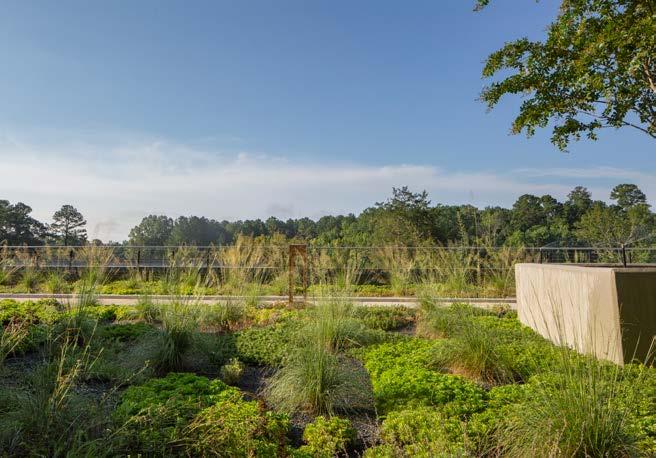


47
CLICK HERE TO READ MORE CLICK HERE TO READ MORE CLICK HERE TO READ MORE INTRODUCTION EXECUTING A FRAMEWORK MEASURING OUR PROGRESS BUILDING A HEALTHY COMMUNITY LOOKING TOWARD THE FUTURE
WORDS FROM OUR CEO HARMONIZING WITH NATURE

In this 60th year of Little’s existence, as we reflect on the journey outlined in this annual sustainability report, it becomes abundantly clear that our pursuit of 'Good Design' transcends conventional boundaries.
We've started on our path to redefine the very essence of how we design. We seek to elevate it beyond aesthetics and functionality to a place where it harmonizes with nature, fosters community, nurtures regenerative practices and contributes to the health and success of our clients, communities and world.
As we see in the intricate tapestry of the natural world, the concept of Harmony serves as a guiding principle. We recognize that true sustainability lies not in isolated actions, but in the interconnectedness of all things. Like a symphony orchestrated by Mother Nature herself, our designs seek to achieve a dynamic balance that adapts, evolves and regenerates over time. But achieving this harmony requires more than good intentions. It demands a fundamental shift in how we think and act, a commitment to ecological stewardship, and a willingness to embrace systemic change. It calls for collaboration, innovation, and a deep respect for the world around us. Moving the needle in a meaningful way requires the collective effort and the teamwork of many.
In this annual sustainability report you’ve seen evidence of our dedication to this cause. From groundbreaking projects that embrace regenerative principles and conserve precious resources to community initiatives that promote environmental literacy, each moment represents a step forward on the path to a more sustainable future.
Carol Rickard-Brideau, AIA, NCARB, LEED AP BD+C, WELL AP is a Partner and Chief Executive Officer at Little. She can be reached at carol.rickard@littleonline.com.
At Little, we are not content to rest on our laurels. We understand that the journey toward sustainable design is ongoing—a continuous evolution marked by frustrating setbacks, moments of inspiration and meaningful progress. As we turn the page on another year of our quest, we remain steadfast in our commitment to pushing the boundaries of what's possible.
BEYOND SUSTAINABILITY ANNUAL REPORT 48

49 INTRODUCTION EXECUTING A FRAMEWORK MEASURING OUR PROGRESS BUILDING A HEALTHY COMMUNITY LOOKING TOWARD THE FUTURE
© Daniel Mai, NOMA, Assoc. AIA, Human Resources, Little
GLOSSARY OF TERMS
Regeneration
Regenerative and restorative buildings go beyond living building levels by not only enhancing their own structures but also revitalizing the surrounding environment. This includes activities like restoring the natural hydrology of a site or creating habitats for wildlife and plants that have been lost.
Sustainability
Sustainability is based on a simple principle: Everything that we need for our survival and well-being depends, either directly or indirectly, on our natural environment. To pursue sustainability is to create and maintain the conditions under which humans and nature can exist in productive harmony to support present and future generations.
HEWS
Health, Energy, Water and Social Equity (HEWS) are Little’s focused areas of measurement.
Predicted Energy Use Intensity (pEUI)
Predicted Energy Use Intensity is the measurement of a building's annual energy usage.
Lighting Power Density (LPD)
Lighting Power Density is the total input power of the designed or installed lighting system per square foot, expressed as watts per square foot (W/sf). You may also see Predicted Lighting Power Density (pLPD).
Embodied Carbon
Embodied Carbon is the carbon dioxide emitted during the manufacture, transport, and construction of building materials, together with end of life emissions.
Operational Carbon
Operational Carbon is the carbon emitted during the lifetime operational use and maintenance of a building.
Energy Model
An Energy Model is a simulated prediction of energy use based on designed characteristics and historical climate data.
Net Zero/Net Positive
Net Zero/Net Positive is an energy-efficient building where, on a source energy basis, the actual annual delivered energy is less than or equal to the on-site renewable exported energy.
Net Zero Ready
Net Zero Ready is a high performance building with ultralow energy consumption and has the ability to be offset with on-site renewable energy generation to become a zero energy building.
Integrative Process
An integrative process is a comprehensive approach to building systems and equipment. Project team members look for synergies among systems and components, the mutual advantages that can help achieve high levels of building performance, human comfort, and environmental benefits. (usgbc)
Gross Square Feet (GSF)
Gross Square Footage is the total area of enclosed space measured to the exterior walls of a building.
SIGs
Special Interest Groups (SIGs) are voluntary, employee-led groups focused on creating a sense of community through common interests.
Earth's Carrying Capacity
Earth's Carrying Capacity is the maximum, sustainable population size that the planet can support while maintaining a balance between the resources available and the demands placed on them by human activities and other species.
Rewild
Rewilding refers to the process of restoring and reconnecting natural habitats and ecosystems, often by reintroducing native species and allowing natural processes to occur with minimal human intervention.
Scope 1, 2, 3 Emissions
A way of categorizing the different types of carbon emissions that a company generates.
BEYOND SUSTAINABILITY ANNUAL REPORT 50
51

Levine Children's Hospital Multi-Specialty Outpatient Center Charlotte, NC www.littleonline.com












 Jen Todd AIA, CPHC®, NCARB
Philip Donovan AIA, LFA, LEED AP BD+C, NCARB
Vickie Breemes CSI, CCS, LEED AP BD+C, LFA, WELL AP
Scott Brideau LEED AP, CDT
Jen Todd AIA, CPHC®, NCARB
Philip Donovan AIA, LFA, LEED AP BD+C, NCARB
Vickie Breemes CSI, CCS, LEED AP BD+C, LFA, WELL AP
Scott Brideau LEED AP, CDT











































































































